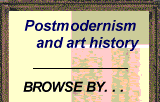Could Renoir Draw?
John Haberin New York City
Pierre-Auguste Renoir: Drawings
With Renoir drawings, the Morgan Library has the richest and most luxuriant show in town. Surprised? Probably not, but maybe you should be.
The sheer fact may not surprise anyone. The Morgan was founded more than a century ago to house J. P. Morgan's rare and precious collection. Just entering, past the overblown atrium on the way to the galleries and Morgan's many tiered private library, is enough to make one feel privileged. Then, too, Pierre-Auguste Renoir is always a crowd pleaser. Impressionism itself is, and Renoir did as much as anyone to show why with stroke after stroke of soft, glowing color. His tightly woven surfaces of short parallels show how it is done. 
A life of luxury
Pierre-Auguste Renoir's very subject is luxury as you might hope to experience it—not wealth, least of all inherited wealth, but a life of luxury for the rising middle class. And that, he would rightly or wrongly insist, means you. That includes the public privilege of museums, like the Louvre, founded under Napoleon in 1793. Renoir loved museums and spent his leisure hours in them teaching himself to draw. Then, too, this show boasts of excess and overflow. It gets both the museum's largest and oldest galleries.
Remember something, though: there was a time when this was not the epitome of art. Born in 1841, Renoir exhibited in the first Impressionist exhibition, when that meant a refusal to play by the rules. And the first of those rules was the primacy of drawing. It ushered in a new ideal of plein-air painting, spontaneously, out of doors and on the spot, to capture the light. Renoir joined Claude Monet on day trips up the Seine to make that happen, and it remade art. It can be hard to remember that in light of the new norm, but it did.
Renoir can seem to get off the hook because he had a style all his own, with painting and its subject alike pleasingly soft, pleasingly bright, and pleasingly plump. Late work especially, at the Barnes Foundation in Philadelphia and elsewhere, can seem little to do with drawing and a lot to bear. The show includes a silent film clip from the new century, with the bearded old man softly talking it up. But he loved drawing and did lots of it. If you are surprised that he could begin to fill two galleries with drawings, he could indeed. Now New Yorkers get a chance to see why.
The curators, Colin Bailey and Sarah Lees, insist on drawing the old-fashioned way, as a tool of the trade. They ask to think of Renoir as starting with sketches to discover his composition and to perfect it. It opens with Monet in a Paris museum, drawing after classical sculpture. In a proper education, it says, anatomy comes first. Fair enough, but the artist had more on his mind. Those drawings set out limits to the details of human anatomy and the texture of naked flesh, with not the least interest in "getting it right."
Nor does he fully incorporate the heightened twists and turns of classical poses. Plenty of mastery goes into multiple drawings for a couple at a dance, and the Morgan brings along the finished product for the very center of the first room. Its colors alone are a welcome relief, and their poses announce their comfort in one another and the viewers in them. If anything, rather than perfect their poses, he repeats them. The second room allows greater exaggeration in portraits in oil and in lean studies for The Great Bathers, which the Morgan borrows as well. Still, the whole point seems to be how easily they came to him and how much he would hate to give them up.
He made drawings, then, because he loved them, and he loved them for themselves. They appear at every stage of his career and allow a survey in brief. They also raise flags concerning what the Morgan leaves out. They allow a many-sided view of the origins of Impressionism, with little landscape and just so much time up the Seine. The museum hardly minds if you value the sheer luxury of parallel strokes in primary color alongside the mere outlines of bathers, as long as you value the luxury. Without the wide-open color fields of Monet's Waterlilies or the near mathematical insistence in Seurat's drawings and Seurat's dots, he is further from Modernism but closer to joy.
No single one reason
Renoir had no single reason for drawing. As you can see from the opening drawings after classical sculpture, though, it comes down to the pleasure of making and viewing art. As he closes in on the dancers at Bougival, he can take pleasure in the red of the woman's hat and blue of the man's suit to either side of her white dress with rich accents in shades of gray. He can sneak in the hints of activity in the patterns of her dress or in minor actors everywhere with their own spots of black and white. It encourages him to make multiple versions including paintings in the d'Orsay in Paris, Boston, the National Gallery in Washington, and the Frick. Copies, it turns out, sell.
They help him, too, to learn a subject, what a 2013 exhibition at the Met called "Impressionism, Fashion, and Modernity." It comes in many forms, from a washerwoman's modest labor to extraordinary leisure, like the dance. He will be a storyteller all his life. That is why so many drawings have a large cast, enough to fill a book. They also encourage him to work on commission, and he contributes to an edition of Emile Zola's L'Assommoir. Between copies and commissions along with originals, he need never stop.
That one commission is also a dead end. Perhaps Zola's greatest novel, it is also his most probing and serious, following a working woman in her descent into alcoholism, abuse, and despair. Its title is a nonce word derived from the verb assommer, meaning to bludgeon. This is the furthest Renoir will stray from the celebration of pleasure. Yet here, too, he is finding himself. He will find his own private Eden again and again.
The show opens onto landscape only after the dance—and then mostly if you count the imagined waters of the bathers as landscape. A very few views on small sheets of paper are gone as soon as they begin. Their town at a distance has extraordinary leaps into depth, with the sky a sheer blue wall. From there, it is on to the second room with two more versions of Eden, bathers and family. Not all are full-length portraits, the subject of a show at the Frick Collection in 2012. But the luxuriance is real.
It is an extended family, for his best friend are artists. He has stopped painting alongside Monet, but he has stayed close to the Impressionist circle, including Edouard Manet and Berthe Morisot. With friends like these, who needs landscape? He has a particular fondness for children in the company of adults, like Morisot with her daughter, Julie, or with his own son. These stories are told indirectly, with as little as the touch of a hand to recall a parent's presence. The very same gesture may appear coming from a bather.
The Morgan has too few landscapes for a representative view of the artist. It does, though, have a comprehensive view of Renoir's media. It has his pleasure, without succumbing totally to his sweetness. Like Paul Cézanne, he saw limits in Impressionism's claims to spontaneity, when he could see something truer to the feelings in his head. (His most detailed portrait, an early one, is of Cézanne's head.) Who is to say he was not right?

Renoir drawings ran at The Morgan Library through through February 8, 2026.




